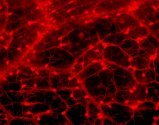
COBRE
Department of Ophthalmology
University of Oklahoma Health Sciences Center
HOME | PI | PJIs | CORES | MENTORS | IAC | EAC | SPOTLIGHT | SEMINARS | CALENDAR | AFFILIATES
John Ash, Ph.D.
Wei Cao, Ph.D.
Michael Ihnat, Ph.D.
Yun Le, Ph.D.
Raju Rajala, Ph.D.
PROMISING JUNIOR INVESTIGATOR
YUN LE, PH.D.
COBRE Research Project
YUN LE, PH.D.
COBRE Research Project
Role of PI 3-Kinase and its Downstream Target Bcl-XL in RPE
(Mentor, Robert E. Anderson, MD, PhD)
My laboratory is interested in the roles of lipid second messengers generated in the phosphatidylinositol (PI) cycle in phototransduction, retinal degeneration, and protection of retinal cells from apoptosis. One messenger, PI-3,4,5-P3, generated by the PI-3 kinase (PI3K), plays an important role in cell protection, cell proliferation, glucose homeostasis, membrane trafficking and cytoskeletal rearrangement. In neuronal cells, activation of PI3K has been shown to protect the cells from stress-induced apoptosis. However, the functions of PI3K in visual systems are not well understood. Retinal pigment epithelial (RPE) cells are post-mitotic cells that provide the "blood-retinal barrier", and control the flow of nutrients and waste products between the retina and the blood. Death of these cells leads to death of rod and cone photoreceptor cells, and compromise in RPE function may be a contributing factor in age-related macular degeneration. Since Bcl-XL, a downstream target of PI3K is highly expressed in RPE cells under cytotoxic stress, it is likely that PI3K plays an important role in RPE cell survival. We hypothesize that PI3K and Bcl-XL are major survivor factors in RPE. To test this hypothesis, we will use a genetic approach to disrupt PI3K and Bcl-X (Bcl-XL) in RPE, and compare the functional, biochemical, and structural phenotypes of the mutant mice with those of wild type mice. Since the conventional PI3K(p85a/p110a) and Bcl-X knockout mice are neonatal or embryonic lethal, mouse models of PI3K and Bcl-X null mutation will be generated in a RPE specific fashion, using the Cre/lox system. Therefore, I propose 1) to generate and characterize transgenic mice expressing RPE-specific Cre driven by RPE65 promoter; 2) to generate RPE-specific PI3K and/or Bcl-X null mice and test the hypothesis that PI3K and Bcl-XL are involved in RPE cell survival, 3) to test the hypothesis that compromised RPE cells may exacerbate the death of photoreceptor cells with PI3K and/or Bcl-X null mutations using the RPE-specific PI3K, or Bcl-X null mice generated in this study and the ABCR null (RPE degeneration) mice. A major goal of this project in the context of the COBRE program is to establish mouse models that can be used in future studies to elucidate the mechanisms of inherent retinal degeneration.
Please send comments,
questions, or error reports to Holly-Whiteside@ouhsc.edu

Copyright © 2003 The Board of Regents of the University of Oklahoma, All Rights Reserved
University of Oklahoma Disclaimers
Copyright © 2003 The Board of Regents of the University of Oklahoma, All Rights Reserved
University of Oklahoma Disclaimers